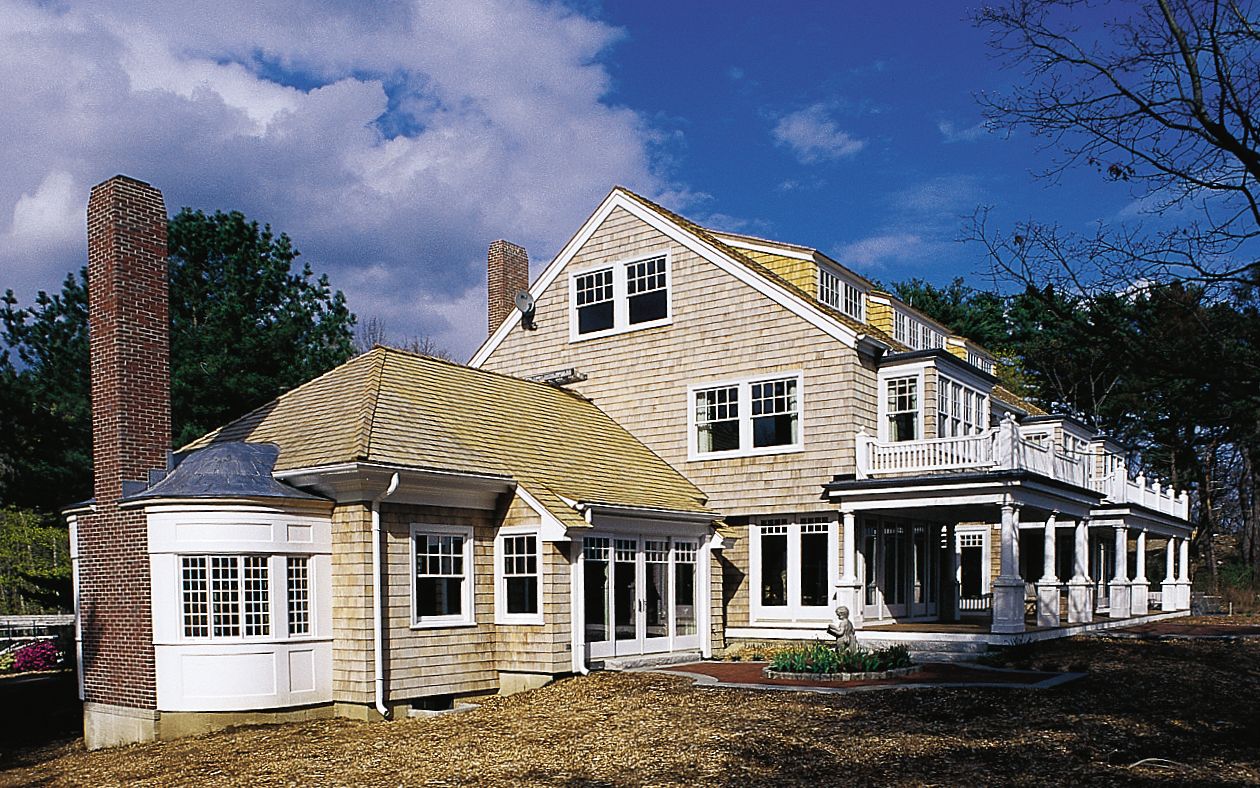
The inglenook and the fireplace are the lineal descendents of the open
fire once placed in the middle of medieval halls. There was no chimney and the hall would be always filled with smoke that flowed through unglazed windows. There was little loss of radiant heat but the
inhabitants must have been very grubby.
About the 12th century the fireplace was moved from its central location
to a perimeter wall and eventually the fireplace began to be enclosed by
side walls and covered with a smoke hood. The necessity for having a large hearth to burn big logs increased the size of collecting hoods and their supporting side walls in large, drafty common halls. The result was literally the building of little rooms within large ones.
Those who cooked and tended the fire stood within the enclosed hearth.
Soon, benches were placed on opposite sides so that additional family members could share the cozy space. The inglenook or “chimney corner,” had evolved, and saw its heyday throughout the middle ages.
As families became more affluent, cold stonewalls were covered with wood paneling and tapestries. As rooms became more comfortable and fireplaces became more efficient, the inglenook was gradually reduced to decorative columns and pilasters. The trim that still surrounds our traditional fireplaces is symbolic of the inglenook — or “the little room inside a big room.”
At the turn of the last century, men who had amassed fortunes in the
great expansion of the Industrial Revolution looked for ways to spend
them. For many, one of the most appealing investments was an elaborate Shingle-style cottage or estate away from the turmoil of the city.
Central to Shingle-style architecture was the revival of the inglenook
chimney corner. A medieval symbol for hearth and home, the inglenook was placed at the very core of the house, usually in the hall. These
shingled retreats were for summer resort living, a safe and carefree
family home where all could gather around the fire on a foggy evening in
the protective inglenook.
In more recent times, however, with the development of central heating,
air conditioning and large expanses of glass, the homeowner came to be
more an observer of the natural world than a part of it. The cozy
chimney corner and fireplace seemed unnecessary and has been noticeably absent from most post-war homes.
My goal in recreating the McCue House was to build with the most modern mechanical systems and building materials while creating a house with all the architectural qualities of a classic Shingle-style home.
Central to my design is the inglenook, placed at the far end of the music/living room, terminating its visual axis. Surrounding its large
fireplace are cushioned benches, paneled walls and small windows with views of the cove. It is not used for cooking and only occasionally for
heating, but it strongly imparts feelings of sheltering welcome and
domestic serenity.
A second inglenook that may not seem obvious was primary in my design concept for the kitchen/family room. The kitchen work area is framed by a long overhead beam and supported by two side-wall pilasters. This cooking area, “the hearth,” provides a cozy space for family members to prepare meals much as in medieval times but its interior is now surrounded by paneled cabinetry and is equipped with the most up-to-date appliances. It has striking views of the harbor and provides ample opportunity for friendly conversation and relaxation. This little room fits comfortably within the big family room.
The sheltering form of the Shingle-style cottage reflects the intimacy of its medieval origins. The McCue House, with its new additions, reaches out into its waterfront landscape and provides access to it, while maintaining the security and warmth from its symbolic ancient hearth.
Stephen Holt was the architect for the Manchester project.

